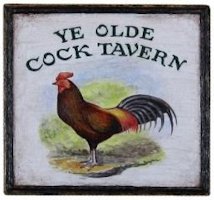
|
Some Common Myths Thought to be True - Myth 44
Myth 44: Ye Olde Middle Ages
Despite being commonly believed today, people during the Old and Middle English
speaking periods never pronounced or spelled "the" as "ye." The confusion
derives from the use of the character thorn (&$254) in abbreviations of the
word "the," which in Middle English text looked similar to a y with a
superscript e (y
e
).
|
| Ye Olde Middle Ages | |
|
In Old English, ye was governed by a simple rule: thou addressed one person,
and ye addressed more than one. After the Norman Conquest, which marks the
beginning of the French vocabulary influence that characterized the Middle
English period, thou was gradually replaced by the plural ye as the form of
address for a superior and later for an equal. The practice of matching
singular and plural forms with informal and formal connotations is called the
T-V distinction, and in English it is largely due to the influence of French.
|
|
| ⇦ Back to Myth 43 Return to Myth Choices Page 3 On to Myth 45 ⇨ | |